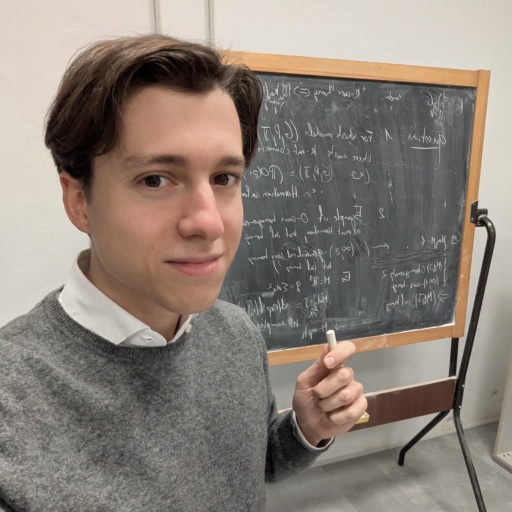Moment-free approximation of linear functionals
Status: in preparation. Last update: September 2025
Abstract: Consider the problem of approximating a bounded linear functional \(\Lambda\) defined over a Banach space \(\mathcal{F}\) by a linear combination of functionals \(\varphi_1,\dots,\varphi_N \in \mathcal{F}^*\): \[ \Lambda \approx w_1 \varphi_1 + \dots + w_N \varphi_N = w^T\Phi, \qquad \Phi = (\varphi_1, \dots, \varphi_N)^T. \tag{1} \] This problem arises in numerical analysis when \(\Phi(f)\) is known or can be evaluated easily for any \(f \in \mathcal{F}\), but the value of \(\Lambda (f)\) is unknown and much harder to compute. The problems of numerical integration, interpolation and differentiation can all be posed in this form.
The usual way to determine \(w\) is to impose exactness of (1) over a finite-dimensional subspace \(\mathcal{S} \subset \mathcal{F}\) spanned by generators \(s_1,\dots,s_M\), which leads to a linear system for the weights. This simple approach is known as moment-fitting, and its main downside is that it requires \(\Lambda\) to be evaluated over all generators when assembling the right-hand side of the system, a task potentially as hard as computing \(\Lambda(f)\) itself. In earlier work [1], we have introduced a way to overcome the moment computation problem in the context of numerical integration. It only requires a single non-zero moment to be known, and in many cases leads to an effectively moment-free approximation of \(\Lambda\).
In this talk, we generalize our moment-free approach to any linear functional, provided that two conditions are met. First, there must be a natural way to include \(\Lambda\) into an exact sequence of Banach spaces \[ \mathcal{U} \xrightarrow{\mathcal{A}} \mathcal{F} \xrightarrow{\Lambda} \mathbb{R} \xrightarrow{} 0. \] Exactness of the sequence implies that \(\mathcal{A} u = f\) has a solution \(u \in \mathcal{U}\) if and only if the compatibility condition \(\Lambda (f) = 0\) holds. Second, a linear numerical method must be available to discretize and solve the equation \(\mathcal{A}u = f\) for compatible \(f\). Given these, and a single function \(\hat{f} \in \mathcal{F}\) for which \(\Lambda(\hat{f})\) is known and different from zero, we propose the alternative linear system \[ A^T w = 0 \qquad \Phi(\hat{f})^T w = \Lambda (\hat{f}) \] to determine weights \(w\) suitable for the approximation (1), where matrix \(A\) is the discretization of operator \(\mathcal{A}\) introduced by the numerical method.
We present a characterization of the solvability of this system, as well as a priori bounds for the approximation error \(\vert \Lambda(f) - w^T \Phi(f) \vert\). As an application, we show that on smooth two-dimensional domains this moment-free approach yields positive quadrature formulas of order two (up to a logarithmic factor) using Shortley–Weller grids as quadrature nodes. Furthermore, we establish the existence of stable quadrature formulas of order 3, also up to a logarithmic factor.
References: [1] Davydov, O., & Degli Esposti, B. (2025). Meshless moment-free quadrature formulas arising from numerical differentiation. Computer Methods in Applied Mechanics and Engineering, 445, 118199.
I have recently given a talk on this topic at the DRWAA 2025 workshop in Alba di Canazei, Italy. Slides are available for download.
